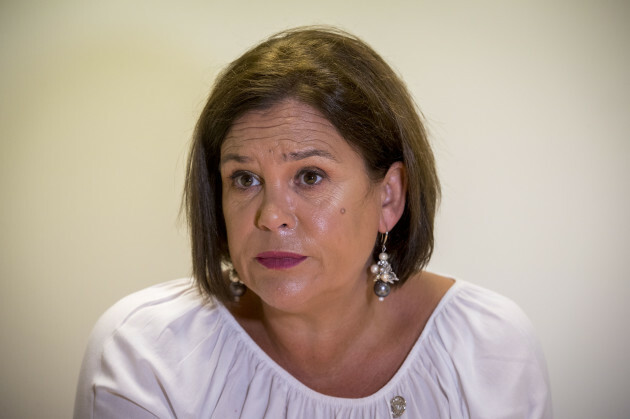By James Kinchin-White and Ed Moloney
I first met James Kinchin-White in early 2010 when a contact in Belfast suggested he would make a good interviewee for the film I was then helping to make in Dublin, ‘Voices From The Grave’, based on the book of the same name, which in turn was based on the Boston College oral history interviews with IRA leader Brendan Hughes and UVF leader David Ervine.
James had been a serving soldier with the Royal Green Jackets in the lower Falls area in 1972 and when on patrol one day he briefly had Brendan Hughes in his gun sights. Hughes was peering around a street corner, taking the odd pot shot at troops with a revolver and James was just about to pull his trigger when an old lady got in his way. When he looked again Hughes had disappeared. Thus does fate weave its strange fabric.
We flew him over from Scotland and he gave a great interview.
Brendan Hughes’ brush with death happened a long time ago and to say that James now views his military service through more jaundiced eyes might be a bit of an understatement. To compensate, I suspect, for those days he decided he would devote himself to an exploration of the shelves of the British government’s archives at Kew in a bid to dig out the secrets of a conflict which had marked him, as it has everyone else it has touched.
When I heard of this plan I asked JKW, as I call him, if he would keep a special eye out for anything which might be helpful in our fight against the British and American governments’ effort to confiscate the oral history archive at Boston College. He agreed and thus was born a wonderfully fruitful if lop-sided relationship.
Lop-sided in the sense that he does all the hard work at Kew while I get to sit back and read and write about what he has found.
This article marks the beginning of an especially important, indeed unique piece of research carried out by James into the history, origin and activities of the MRF in Northern Ireland in the early months and years of the Troubles. Over the next week or two thebrokenelbow.com, with James in the driving seat, will publish a series of important, revelatory articles about this key feature of the early Troubles.
The MRF was, it is believed, created by General Sir Frank Kitson to counter, in particular, the two IRA’s (Official and Provisional) who were intensifying their violence in the opening years of the 1970’s. The MRF was, it is believed, loosely based on the counter gangs Kitson had created in Kenya to oppose the Mau-Mau during their uprising against British colonial rule in the 1950’s.

Brigadier Frank Kitson
By the early 1960’s Kitson’s experiences in Kenya, and later Malaya, were receiving international recognition. He was regarded as one of the leading lights in COIN, or counter-insurgency strategy and in 1962, as US involvement in Vietnam was ratcheting up, he was invited by the Rand Corporation, along with his French counterpart, David Galula – an inspiration for the movie Battle of Algiers – to address a high level conference in Washington DC on tactics and strategy in post-colonial conflicts.
Kitson’s contribution dealt, inter alia, with Kenya and included: Turning a Mau Mau into a Counterrebel: The Carrot-and-Stick Approach; Trickery and Deception (the “Pseudogang”). It is not difficult to see in this approach the seeds of the MRF which specialised in recruiting IRA double agents known as ‘Freds’.
His two books, based on his experiences in Kenya and later Malaya -‘Gangs and Counter Gangs‘ and ‘Low Intensity Operations’ – also describe the military philosophy which inspired the MRF.
In June 1970, Kitson was promoted to Brigadier and in September that year was made commander of the British Army’s 39 Brigade, which covered Belfast at a time when the city was rapidly becoming the cockpit of the IRA’s war against the British. Kitson arrived in the city after the Falls curfew at a time when the IRA was intensifying its commercial bombing campaign in the city and beginning to expand in rural areas. He stayed until the end of April 1972, a few weeks before the first Provisional IRA ceasefire.
It was during these months that Kitson is thought to have developed and deployed the MRF concept.
JKW has unearthed a rich seam of new information about Kitson’s creation, its real name, its origins and structure, possible relationship with Loyalist paramilitaries and its violent history during the early stages of a violent convulsion that would last some three decades. In doing so he has made an important contribution to the history and understanding of this consequential chapter in the story of the Troubles.
What follows is the first article in the MRF File gathered by JKW. Enjoy.
♦ ♦ ♦ ♦ ♦
In May 1973, a British official in the Ministry of Defence in Whitehall by the name of F M K Tuck, composed a memo about the activities of the MRF to his civil service colleagues in which he wrote the following:
As far as the general policy of making official comment on intelligence gathering and plain clothes operations is concerned, there seems to be considerable advantage in maintaining as much confusion as possible. There can be no useful purpose served for instance in defining the correct expansion of the initials MRF.
(You can read the full memo here)
And so was begun, or at least confirmed, a British policy of disinformation about the name of one of its most controversial undercover military units to see service on the streets of Northern Ireland.
Down the years the initials MRF have been taken to mean variously ‘Military Reaction Force’, ‘Mobile Reconnaissance Force’ and ‘Military Reconnaissance Force’ by reporters and experts.
Eventually, on March 15th, 1994 came apparent confirmation of the true meaning of those mysterious initials. In a written parliamentary answer to a question tabled by the British Labour MP, Chris Mullin, this explanation was offered:
The Military Reaction Force was a small military unit which during the period 1971 to 1973, was responsible for carrying out essential surveillance tasks in Northern Ireland in those circumstances where soldiers in uniform and with Army vehicles would be too easily recognised.
And so the matter seemed settled. MRF stood for Military Reaction Force. That was the explanation given, for example, in the book Voices From The Grave.
Except that was lie. As was the claim that the MRF was involved exclusively in ‘essential surveillance tasks’; the MRF shot people and occasionally killed them as will be seen in other documents to be published on this site.
Evidence that at least the ‘Military Reaction Force’ claim was a lie comes in a ‘loose minute’ (jargon for an internal letter) prepared in the aftermath of a visit to Northern Ireland by one the British Army’s most senior officers, the Director of Army Strategic Defence (DDASD) , dated February 1972 and written by Colonel James Glover, then a senior member of staff at Army Strategic Defence.
The document was Glover’s effort to answer questions raised by his boss during his visit to Northern Ireland in Early February 1972.
Students of the Troubles will recognise his name. As Brigadier James Glover – and one of the British Army’s foremost experts on the IRA – he was the author of a controversial 1979 assessment of the organisation titled ‘Future Terrorist Trends‘, which predicted that the IRA had the ‘sinews of war’ to continue its campaign more or less indefinitely.
He later commented in a BBC television interview that in the context of his assessment of the IRA, “Gerry Adams was a man with whom we can do business'”.
The final sentence in his ‘loose minute’ reveals the real meaning of the initials MRF:
10. Mobile Reaction Force (para 21). Three sergeants with SAS experience have been nominated as section commanders on 1 year tours.
The document also suggests that the MRF derived the title ‘Mobile’ from its dependence on cars, in the MRF’s case second-hand cars, presumably because they were harder to trace. So it is not difficult to see where the term ‘Mobile’ came from; less obvious is why it was necessary or profitable to keep this a secret for quite so long.
But at least we now know. MRF stands for Mobile Reaction Force.
One more point of interest. It is clear from the document that the MRF’s Four Square Laundry operation, which you can read about here, had not been initiated by February 1972. By October that year the IRA, thanks to information provided by informers Seamus Wright and Kevin McKee, knew enough about the operation to ambush the MRF soldiers operating the bogus laundry van in West Belfast.
























You must be logged in to post a comment.